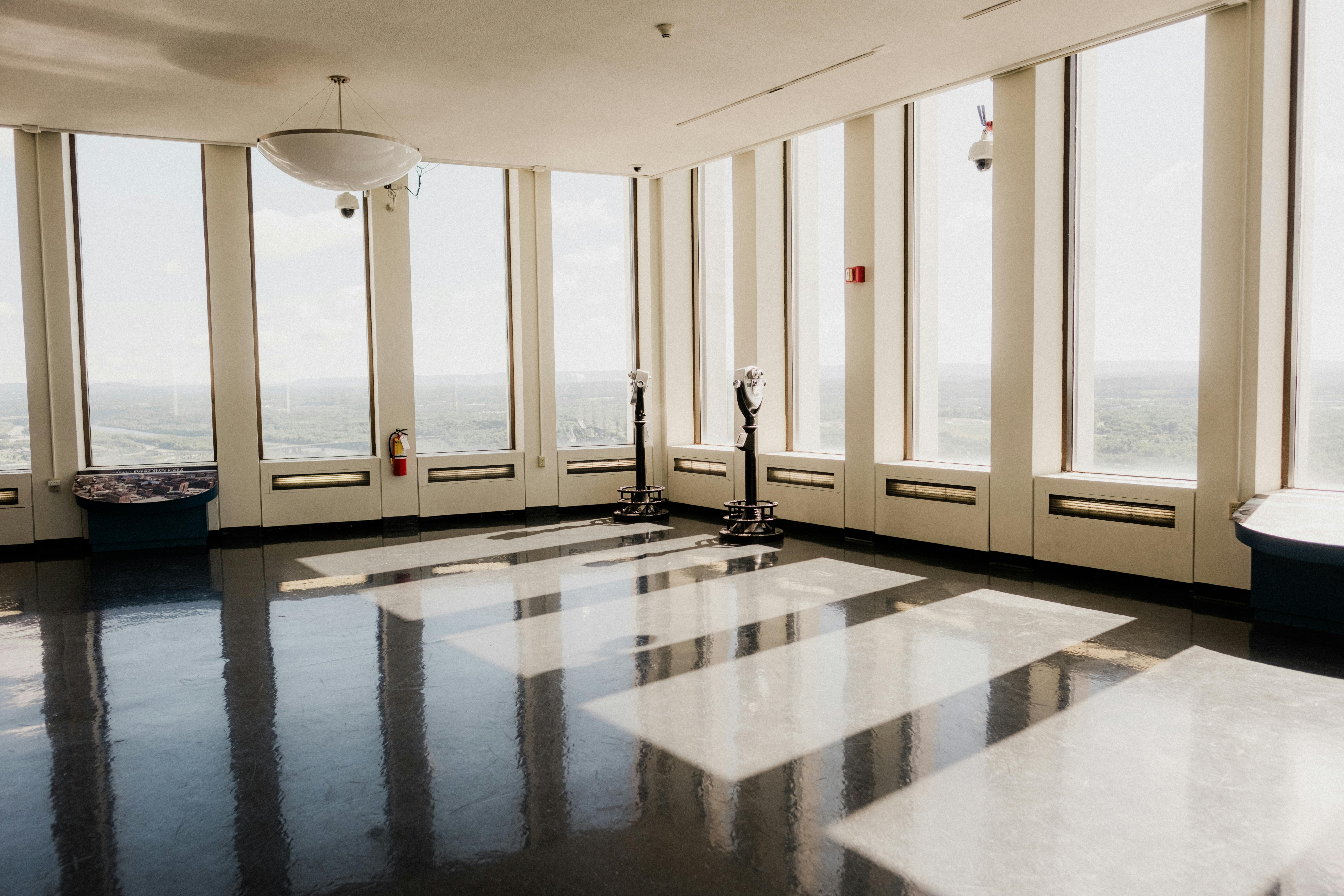So you’ve just purchased a sleek and sophisticated wireless video monitor and you’re eager to install it on your wall for the ultimate viewing experience. But wait, how exactly do you wall-mount a device that is designed to be wire-free? In this article, we will guide you through the steps of wall-mounting a wireless video monitor, ensuring that you can enjoy all the benefits of your new purchase with ease and confidence. From finding the perfect location to securing it in place, we’ve got you covered. Let’s get started!
Choosing the Right Mount
When it comes to wall-mounting a wireless video monitor, one of the first considerations is the weight and size of the monitor. You want to ensure that the mount you choose is strong enough to support the monitor’s weight and will accommodate its dimensions. Be sure to check the specifications of both the monitor and the mount to find a compatible size and weight range.
In addition to size and weight, it’s important to look for a mount with adjustable features. Being able to tilt, swivel, and extend the monitor can provide optimal viewing angles and flexibility. Adjustable mounts can make it easier to find the perfect position for the monitor based on your seating arrangement and room layout.
Lastly, don’t forget to ensure that the mount is compatible with your monitor’s VESA pattern. The VESA pattern refers to the standard layout of mounting holes on the back of the monitor. By matching the mount’s VESA pattern with that of your monitor, you can ensure a secure and proper fit.
Gathering the Necessary Tools
Before you begin the wall-mounting process, it’s important to gather the necessary tools. This will help ensure that you have everything you need within reach and can minimize interruptions during the installation. Here are some essential tools you’ll want to have on hand:
- Screwdriver: You may need both Phillips and flat-head screwdrivers, depending on the type of screws used for the mount and the monitor.
- Drill: A drill will be necessary for pre-drilling holes in the wall if you’re mounting to drywall or to secure the mounting bracket.
- Level: An accurate level will help you ensure that the monitor is properly aligned once it’s mounted.
- Stud finder: A stud finder is essential for locating the studs in your wall, which will provide the necessary support for the mount.
By having these tools ready, you’ll be well-prepared to tackle the installation process without any unexpected trips to the toolbox.

This image is property of images.pexels.com.
Locating a Suitable Wall Position
Determining the right spot for mounting your wireless video monitor is crucial for ultimate enjoyment. Take these factors into consideration when locating a suitable wall position:
- Determine the desired viewing height: Measure the height at which you want the monitor to be mounted. This will largely depend on your seating arrangement, comfort, and the size of the monitor.
- Locate the nearest power outlet: Ensure that the wall position you choose has access to a power outlet for easy and convenient use.
- Ensure the wall is structurally sound: Make sure the wall you’ve chosen is sturdy and can support the weight of the monitor. If you’re unsure, consult a professional to assess your wall’s integrity.
By carefully considering these factors, you can find the perfect spot that offers optimal viewing angles, easy access to power, and a secure mount.
Preparing the Wall and Mount
Before mounting the video monitor, there are several preparatory steps you’ll need to take to ensure a smooth installation process.
- Mark the location for the mount: Use a pencil or tape to mark the exact spot where the center of the mount should be placed on the wall. Double-check the measurements and make any necessary adjustments before proceeding.
- Use the stud finder to identify studs: Locate the studs on the wall within the area where you’ll be mounting the monitor. These studs will provide the necessary support to hold the weight of the monitor.
- Pre-drill holes for the mount: If you’re mounting to drywall, it’s essential to pre-drill holes using the appropriate drill bit size to ensure secure attachment. For wooden studs, pre-drilling may not be necessary.
- Attach the mounting bracket to the wall: Using screws or other provided hardware, attach the mounting bracket to the wall, ensuring it aligns with the pre-drilled holes and the marked center point.
By completing these preparations, you’ll be ready to move on to the next step of mounting your video monitor securely.

This image is property of images.pexels.com.
Mounting the Video Monitor
With the wall and mount prepared, it’s time to mount the video monitor itself. Follow these steps for a successful installation:
- Attach the mounting plate to the monitor: Using the provided screws, attach the mounting plate to the back of the video monitor. Ensure it is securely and evenly fastened.
- Securely mount the monitor on the bracket: Carefully lift the monitor and align the mounting plate with the corresponding bracket on the wall. Slowly slide the monitor onto the bracket, ensuring it clicks into place securely.
- Adjust the tension knobs for optimal positioning: Once the monitor is mounted, use the tension knobs on the mount to adjust the tilt and swivel of the monitor. Experiment with different angles until you find the most comfortable and optimal viewing position.
With the video monitor successfully mounted, you’re one step closer to enjoying an enhanced visual experience in your space.
Powering and Connecting the Monitor
Now that the monitor is securely mounted, it’s time to power it up and connect any necessary cables. Follow these steps to ensure a proper connection:
- Connect the power cord to the monitor: Insert the power cord securely into the power port on the back of the monitor. Ensure that the connection is tight and secure.
- Plug in the power adapter: Connect the power adapter to the power cord and plug it into a nearby outlet. Make sure the outlet is functioning properly before proceeding.
- Connect any necessary audio/video cables: If you plan to connect external devices such as gaming consoles or streaming devices, use the appropriate audio/video cables to connect them to the monitor. Ensure a secure connection for optimal functionality.
By properly powering and connecting your wireless video monitor, you’ll be ready to enjoy the full range of features and benefits it offers.

This image is property of images.pexels.com.
Testing and Adjusting the Setup
Once the monitor is connected, it’s important to test its functionality and make any necessary adjustments. Follow these steps to ensure your setup is working optimally:
- Turn on the monitor and check for functionality: Power on the monitor and ensure that it turns on without any issues. Check for any error messages or abnormal behavior.
- Ensure the display is properly aligned: Use a level to ensure that the monitor is straight and properly aligned on the mount. Make any necessary adjustments to achieve a balanced and visually appealing display.
- Make any necessary adjustments to the mounting angle: If you find that the viewing angles are not ideal or the screen is reflecting too much light, make adjustments to the tension knobs on the mount. Tilt the monitor to reduce glare and find the best possible viewing position.
By thoroughly testing and adjusting the setup, you can ensure that your wireless video monitor is performing at its best.
Managing Cables
To maintain a clean and organized appearance, it’s important to manage and conceal the cables associated with your wall-mounted wireless video monitor. Follow these tips for effective cable management:
- Organize and conceal cables with cable management solutions: Use cable management solutions such as cable sleeves or wire channels to bundle and hide the cables. This will create a neater and more visually appealing installation.
- Use cable clips or adhesive hooks to secure cables: Attach cable clips or adhesive hooks to the wall or the monitor’s mount to keep the cables neatly secured in place. This will prevent them from dangling and creating a potential tripping hazard.
- Consider using a wireless transmitter/receiver for a cleaner look: If you want to eliminate the need for visible cables altogether, consider using a wireless transmitter/receiver kit. This allows you to transmit the video and audio signals wirelessly, providing a cleaner and more streamlined appearance.
By effectively managing your cables, you can maintain a tidy and organized space while minimizing potential hazards.
Finalizing the Installation
Before you sit back and enjoy your newly wall-mounted wireless video monitor, take a moment to finalize the installation process by following these simple steps:
- Double-check the security of the mount and connections: Ensure that all screws and connections are tight and secure. Give the monitor a gentle shake to verify that it’s sturdily mounted and won’t come loose.
- Clean any fingerprints or smudges on the monitor: Use a microfiber cloth and gentle monitor cleaning solution to remove any fingerprints or smudges on the screen. This will ensure a clear and vibrant display.
- Enjoy your newly wall-mounted wireless video monitor!: Sit back, relax, and enjoy the enhanced viewing experience that your wall-mounted wireless video monitor brings to your space.
By completing these final steps, you can confidently enjoy your new setup and take full advantage of the benefits that a wall-mounted wireless video monitor offers.
Troubleshooting Common Issues
While wall-mounting a wireless video monitor is generally straightforward, you may encounter some common issues along the way. Here are a few troubleshooting tips for addressing some potential problems:
- Monitor not turning on: Double-check the power connections to ensure they are secure and that the outlet is functioning. If the monitor still doesn’t turn on, consult the manufacturer’s troubleshooting guide or contact their customer support for further assistance.
- Poor video quality: If you notice a decrease in video quality after mounting the monitor, check the connections and ensure that all cables are securely connected. In some cases, signal interference or compatibility issues may be to blame. Try adjusting the position of the monitor or consult the manufacturer for additional troubleshooting steps.
- Signal interference: If you’re experiencing signal interference or poor connectivity, try relocating the monitor to a different spot in the room. Walls, appliances, and other electronic devices can sometimes affect wireless signals. If the issue persists, consider using a wireless range extender to improve signal strength.
By troubleshooting these common issues, you can quickly resolve any potential problems and enjoy a seamless and high-quality viewing experience with your wall-mounted wireless video monitor.
In conclusion, wall-mounting a wireless video monitor can greatly enhance your viewing experience and create a more organized and visually appealing space. By choosing the right mount, gathering the necessary tools, locating a suitable wall position, preparing the wall and mount, mounting the monitor, powering and connecting the monitor, testing and adjusting the setup, managing cables, finalizing the installation, and troubleshooting any issues, you’ll be well on your way to enjoying the benefits of a wall-mounted wireless video monitor. So, grab your tools, follow these steps, and enjoy the convenience and immersive visual experience that a wall-mounted wireless video monitor can bring to your home or office.

Meet Penny Sterling, the editor behind the captivating content of our blog, “Wireless Video Monitor.” With a background in electrical engineering and a deep passion for technology, Penny has become a leading authority in the world of wireless video monitors. Her ability to distill complex concepts into accessible articles has made her a trusted guide for both tech enthusiasts and newcomers to the field. Penny’s unwavering commitment to research and staying up-to-date ensures that “Wireless Video Monitor” remains an authoritative source for reliable information. Get ready to embark on a journey of wireless video monitor exploration with Penny Sterling as your knowledgeable and dedicated mentor.
